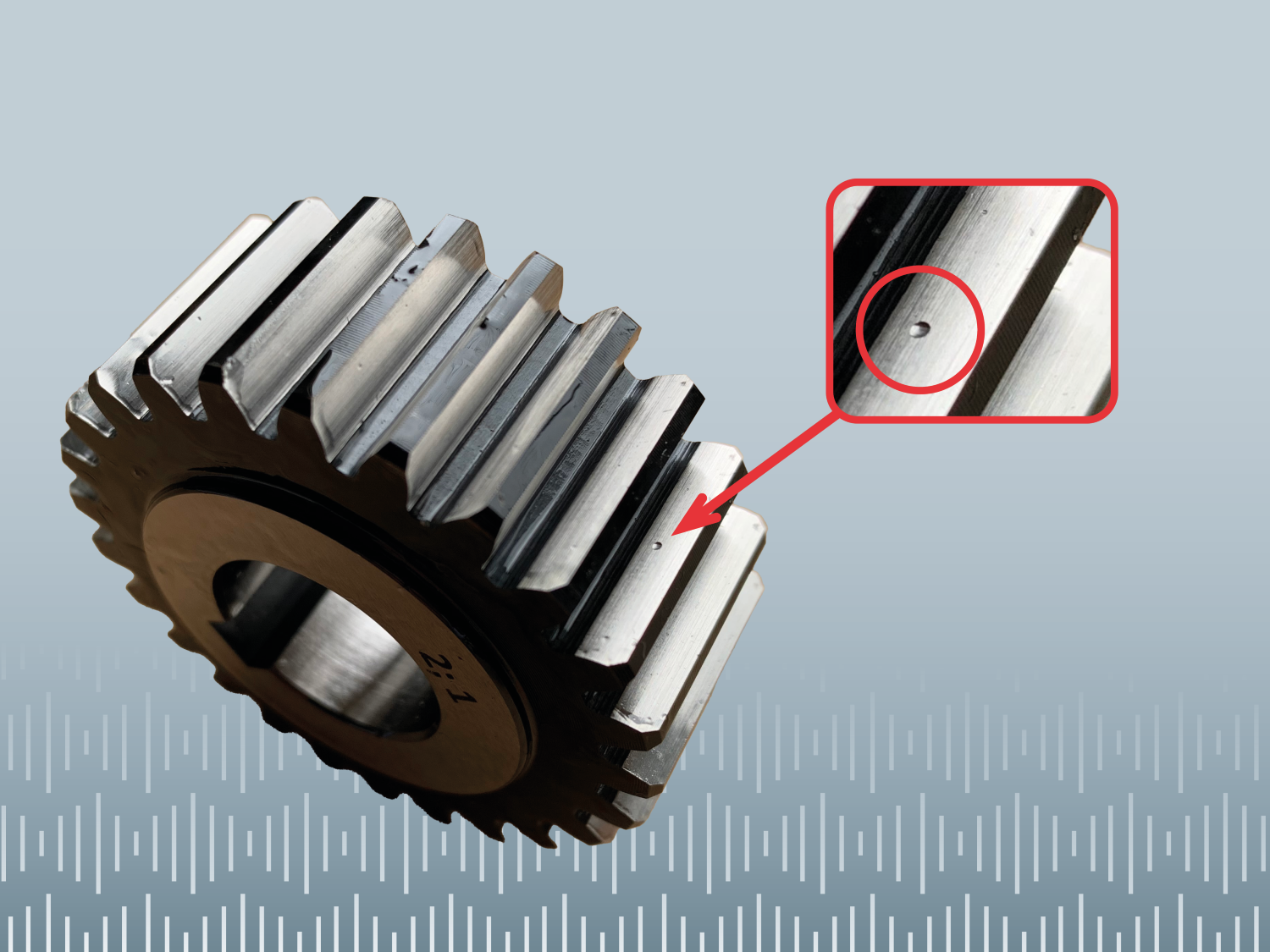Institute for Machine Elements at the University of Stuttgart detects smallest fraction on gear flank surface with the help of a SONOTEC ultrasound sensor.
The intelligent networking of machines plays a crucial role in Industry 4.0. As a result, many machines are equipped with condition monitoring systems. Sensor data recorded on the machine is used to make statements about the condition of the machine or individual critical components. Condition monitoring detects damage at an early stage, so that unexpected machine failures can be prevented. For machine engineers, this results in added value in terms of operational safety as well as a financial advantage.
A gearbox malfunction can lead to an entire machine coming to a standstill. For this reason, gearboxes are particularly suitable for condition monitoring during operation. The main failure mechanisms of gearboxes show a gradual progression of damage. It is therefore possible to detect damage early before it reaches a critical stage. As soon as damage has been detected and the condition of the damage has been identified, the remaining service life of the gearbox can be estimated.
The focus of current research at the Institute for Machine Elements at the University of Stuttgart is on pitting damage. In cooperation with SONOTEC, a measurement technology manufacturer specializing in ultrasound, pitting damage on gears was investigated. In the process, damage could be detected well before the failure criterion standardized in DIN 3990-5 which is of an area fraction on a tooth flank surface of 4%. This is possible with suitable sensor technology. In a series of tests, synthetic pitting damage with area fractions between 0.4 % and 2 % of the area of a tooth flank was examined. In addition to the size of the pitting damage, the speed, torque, and lubricating oil viscosity were systematically varied in the tests. In this way, the detection capability of the pitting damage could be tested under different boundary conditions. Different accelerometers were used to collect data. Compared to the accelerometers, the pitting damage is clearly visible in data of the T20 structure-borne sound probe from SONOTEC, particularly in the ultrasonic frequency range above 16 kHz. Thus, it is possible to reliably detect even the smallest examined pitting damage with area fractions of 0.4% of the area of a tooth flank.

The T20 structure-borne sound transducer differs from classic accelerometers by its innovative transducer principle. At its heart is a piezocomposite material developed and manufactured in-house by SONOTEC, through the use of which an almost linear frequency response with excellent sensor sensitivity is achieved. Due to this principle, SONOTEC's structure-borne sound transducers are much better suited for the detection of smallest mechanical impulses than conventional accelerometers. In the case of slow-running rolling bearings or in gear drives, damage can thus be detected much earlier, which is of particular importance for successful condition monitoring.
The range of applications for condition monitoring with estimation of remaining service life is broad. One example is offshore wind turbines. Due to the difficult accessibility of the turbines on the open sea and the size of the gearboxes, maintenance is associated with high costs. Predicting the remaining service life as part of condition monitoring offers engineers the opportunity to continue operating the wind turbine until a predictable, economical maintenance date.




